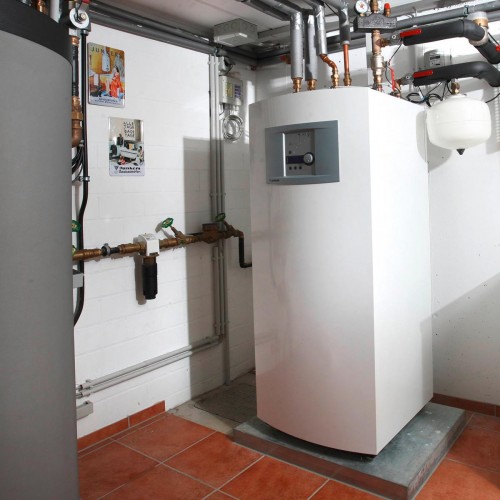Heat pumps take ambient heat from the air outdoors, the water table or the soil and raise its temperature with the aid of advanced technology, so that it can be used for heating purposes. In Austria 208,727 heat pumps were in use in 2013. Currently the main application area for heat pumps is space heating with low inflow temperatures (< 35 °C). As regards interaction with other technologies (solar collectors, PV) and power networks (Smart Grids) we can expect further developments, such that highly integrated energy systems emerge from what are as yet isolated devices operating side by side.
In the IEA’s Heat Pump Programme (HPP) information about heat pumps, refrigeration engineering and air-conditioning is put together and disseminated, in order for these technologies’ environmentally relevant and energy-saving potential to be used more widely in the member states. Joint research projects and workshops, plus an information service, the so-called IEA Heat Pump Centre, are key collaborative concerns.
HPP Annex 42 targets using heat pumps in Smart Grids. Austria’s contribution involves analysing the technical possibilities and the economic and regulatory framework for electric heat pumps to help balance loads in Smart Grids, and investigating the effects on heat consumers and the possible options. On this basis economic incentive models for rescheduling loads are worked out and the benefits for utility companies and end users investigated.

iWPP-Flex
In the exploratory project iWPP-Flex AIT Austrian Institute of Technology is researching the flexible handling of heat pump pooling to make the use of electricity in Smart Grids more flexible. In the course of the project an overall technical strategy and a platform for evaluating heat pump pooling in terms of providing and using energy are to be put together. The results serve as preparation for specifying, implementing and analysing a subsequent demonstration project.
The various stakeholders (owners of heat pumps, pooling operators, utility companies) will be brought together in the context of the technical strategy and linked up with the aid of information and communication technology. This provides the basis for innovative services for household customers, who can make their flexibility available to various players, such as energy traders or network operators. The tools required for classifying this flexibility and for evaluating it in terms of providing and using energy with a view to marketing it will also be developed.
